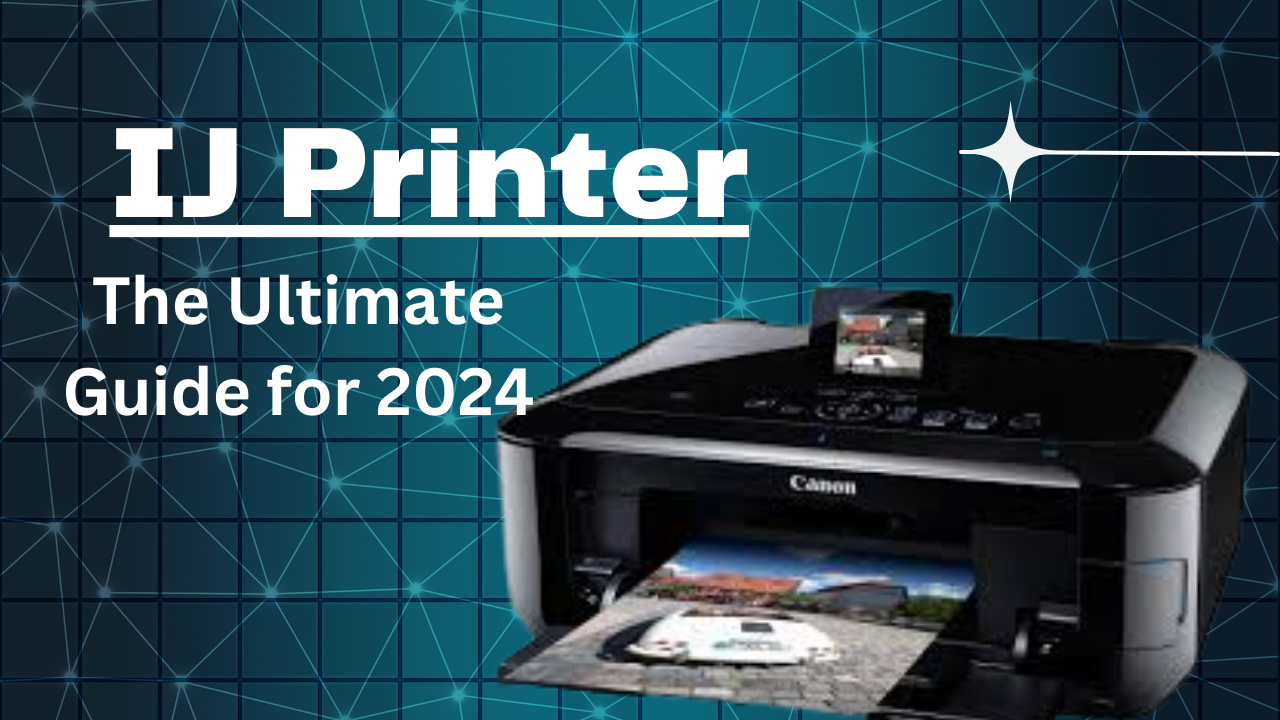Introduction
In the ever-evolving world of printing technology, Inkjet (IJ) printer have become a top choice for both home and office use. These printers have revolutionized the way we produce high-quality printed materials. This comprehensive guide aims to provide an in-depth understanding of Inkjet printers, covering their history, technology, advantages, types, maintenance, and future prospects. Whether you’re a tech enthusiast, a business owner, or a casual user, this article will equip you with all the necessary information to make informed decisions about Inkjet printers.
What is an IJ Printer?
An IJ Printer (Inkjet Printer) is a type of printer that creates images and text by propelling droplets of ink onto paper or other substrates. These printers are widely used in both home and office settings due to their ability to produce high-quality prints quickly and affordably. The core technology behind Inkjet printers involves tiny nozzles that eject precise amounts of ink, forming detailed images and crisp text.
The Evolution of IJ Printer
Historical Background
IJ Printer technology was first developed in the 1950s but didn’t become commercially viable until the late 1970s. The early models were slow and expensive, primarily used in industrial applications. It wasn’t until the 1980s that affordable Inkjet printers entered the consumer market, revolutionizing personal and office printing.
Technological Advancements
Over the decades, IJ Printer have undergone significant improvements. From dot matrix to color Inkjet printers, the advancements in nozzle design, ink formulation, and printhead technology have dramatically increased print quality and speed. Modern Inkjet printers can produce photo-quality prints, detailed graphics, and crisp text at impressive speeds.
How Inkjet Printers Work
Basic Principles
IJ Printer operate by propelling tiny droplets of ink onto paper to form an image or text. This is achieved through one of two main technologies: thermal Inkjet and piezoelectric Inkjet.
- Thermal Inkjet: Uses heat to create a bubble of ink which then bursts and propels a droplet onto the paper.
- Piezoelectric Inkjet: Utilizes a piezoelectric crystal that changes shape when an electric charge is applied, forcing ink out of the nozzle.
Ink Composition
The ink used in IJ Printer is specially formulated to ensure consistency, color accuracy, and quick drying times. It typically consists of dyes or pigments suspended in a liquid carrier. Different inks are designed for various printing needs, from standard documents to high-resolution photos.
Advantages of IJ Printer
High-Quality Prints
One of the primary benefits of IJ Printer is their ability to produce high-quality prints. The precision of ink droplets allows for sharp, detailed images and text, making them ideal for photo printing and professional documents.
Versatility
Inkjet printers are highly versatile, capable of printing on various media types, including plain paper, glossy photo paper, and even fabric. This versatility makes them suitable for a wide range of applications, from home use to specialized business needs.
Affordability
Compared to other printing technologies, Inkjet printers are relatively affordable. Both the initial cost of the printer and the ongoing cost of ink cartridges make them accessible for individuals and small businesses.
Types of IJ Printer
Home IJ Printer
Designed for everyday use, home Inkjet printers are compact, user-friendly, and cost-effective. They typically offer a balance between print quality and speed, making them suitable for printing documents, photos, and creative projects.
Office Inkjet Printers
Office Inkjet printers are built for higher volume printing with faster speeds and larger paper capacities. They often include additional features such as duplex printing, wireless connectivity, and multifunction capabilities (printing, scanning, copying, and faxing).
Photo Inkjet Printers
Specialized for photo printing, these printers use multiple ink colors to achieve a wide color gamut and smooth gradients. Photographers and graphic designers prefer them for their ability to produce professional-grade photos.
Industrial Inkjet Printers
Used in industrial applications, these printers are designed for large-scale printing tasks, such as printing on packaging, textiles, and large-format materials. They offer robust construction, high speed, and specialized inks for durability.
Maintenance and Troubleshooting
Regular Maintenance
Regular maintenance of Inkjet printers is essential to ensure optimal performance and longevity. This includes cleaning the printhead, replacing ink cartridges, and protecting the printer from dust and debris.
Common Issues and Solutions
Inkjet printers, like any technology, can encounter issues. Common problems include clogged nozzles, streaky prints, and paper jams. Most of these issues can be resolved with routine cleaning and following the manufacturer’s troubleshooting guidelines.
Extending Printer Life
Proper usage and maintenance can significantly extend the life of an Inkjet printer. Using high-quality inks and paper, avoiding extended periods of inactivity, and performing regular firmware updates are key practices.
Environmental Impact
Ink and Cartridge Recycling
One of the environmental concerns with Inkjet printers is the disposal of ink cartridges. Many manufacturers offer recycling programs to minimize waste. Users can also opt for refillable cartridges to reduce their environmental footprint.
Energy Consumption
Modern Inkjet printers are designed to be energy efficient, with features such as automatic power-off and energy-saving modes. Choosing an energy-efficient model can help reduce the overall environmental impact.
The Future of Inkjet Printers
Technological Innovations
The future of Inkjet printers looks promising with ongoing innovations. Advances in printhead technology, ink formulation, and 3D printing capabilities are set to further enhance the performance and applications of Inkjet printers.
Integration with Smart Technologies
As smart home and office technologies evolve, Inkjet printers are becoming more integrated with wireless networks, cloud services, and mobile devices. This integration provides greater convenience and flexibility for users.
Sustainable Printing Solutions
Sustainability is a growing focus in the printing industry. Future Inkjet printers are expected to incorporate more eco-friendly materials and processes, contributing to a greener and more sustainable printing environment.
Conclusion
Inkjet printers (IJ Printer) have come a long way since their inception, evolving into versatile and high-quality printing solutions for various needs. Their ability to produce detailed prints, coupled with affordability and ease of use, makes them a preferred choice for many users. By understanding the different types, maintenance practices, and future trends, users can maximize the benefits of Inkjet printers while minimizing their environmental impact. As technology continues to advance, Inkjet printers are poised to remain a vital tool in both personal and professional settings.










